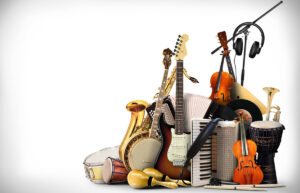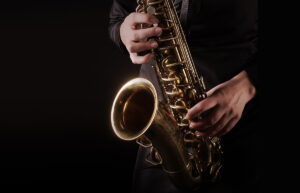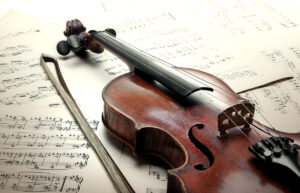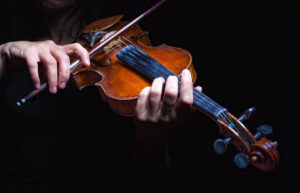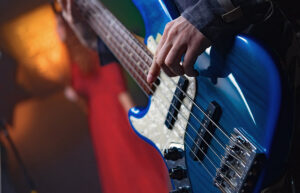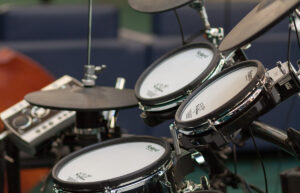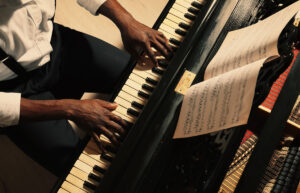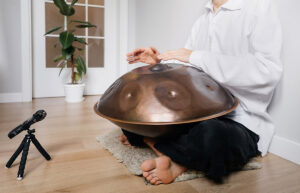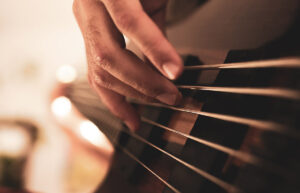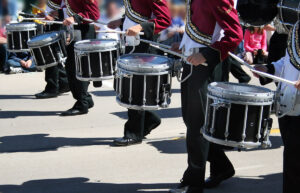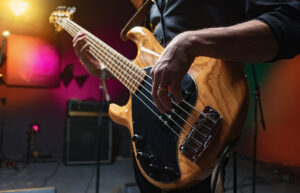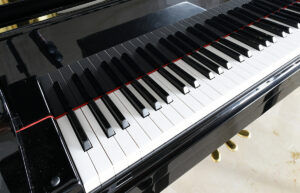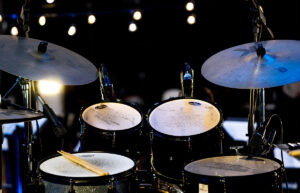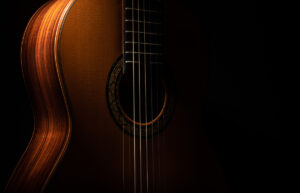Types of Snare Drums: A Comprehensive Guide on Types of Snares

Snare drums are a drum kit’s most essential and versatile instrument, and depending on the type of snare drum and the part of the drum that the stick hits, produce several variations of sharp rattle beat sounds that can cut through any mix and add rhythm and groove to music.
In this guide, we explore the various types of snare drums and their make, what they sound like, and essential parts of a snare.
Welcome to TheDemoStop, now join the community!
Connect with artists, fans and producers around the world.
What is a snare drum?
A snare drum is a percussion instrument characterized by a cylindrical shell with drumheads on the top and bottom. Metal wires, called snare wires, are stretched across the bottom head, which create a distinctive rattling sound when the drum is played. Snare drums are versatile and used in various music genres to provide a sharp, crisp sound that contributes to rhythm and dynamics. A snare drum is typically hit by a wooden stick to produce sound.
Types of snare drums
Drum kit snare drum

- Characteristics: The drum kit snare drum is a versatile drum that is a core component of a drum set. It has a balanced sound that is suitable for various music genres. The drum kit is known for its ability to provide sharp and crisp backbeats.
- Size: Drum kit snare drums typically have a diameter from 13 to 14 inches, and their depth can vary considerably.
- Music genre: This type of snare drum is used across a wide range of music genres, including rock, pop, jazz, funk, blues, and more. Its adaptability makes it a staple in drum kits for various musical styles.
- Skill level: Drum kit snare drums suit drummers of all skill levels, from beginners to advanced players.
- Portability: In the context of a drum kit, the snare drum is a compact and easily portable component.
Concert snare drum

- Characteristics: The concert snare drum is designed for orchestral and concert band performances, emphasizing a refined and articulate sound. The concert snare drum is often played with concert drumsticks and can produce a wide dynamic range of sound to suit the expressive demands of classical music.
- Size: Concert snare drums are typically larger than drum kit snare drums, with diameters ranging from 14 to 16 inches.
- Music genre: The concert snare drum is primarily used in classical and orchestral music and concert band performances.
- Skill level: Concert snare drums are typically associated with intermediate to advanced drummers with experience in orchestra or concert band settings.
- Portability: Although concert snare drums are designed for stationary use in orchestras and concert bands, they can still be transported when required. However, their larger size and specialized use make them less portable than smaller snare drums used in drum kits.
Marching snare drum

- Characteristics: The marching snare drum is designed explicitly for marching bands and drum corps, emphasizing durability, projection, and a powerful sound that can cut through outdoor environments. It is often played in a horizontal position when worn with a harness.
- Size: With diameters from 13 to 14 inches, marching snare drums are typically shallower in depth than drum kit and concert snare drums are. The shallower depth contributes to a focused and projecting sound, allowing for clear articulation in outdoor settings.
- Music genre: Marching snare drums are primarily used in marching band performances, drum corps, and other outdoor settings. They play a crucial role in providing rhythmic drive and considerably influence marching ensembles, rendering them essential for parades, field shows, and similar events.
- Skill level: Marching snare drums are used by drummers of varying skill levels, from beginners in school marching bands to advanced players in professional drum corps. The playing style involves wearing a harness and executing marching techniques, which requires specific training for optimal performance.
- Portability: Although marching snare drums are not as compact as some other portable drums, they are designed to be worn with a harness, allowing mobility during marching performances. The harness distributes the weight of the drum, rendering it manageable for drummers to play when on the move.
Welcome to TheDemoStop, now join the community!
Connect with artists, fans and producers around the world.
Piccolo snare drum

- Characteristics: The piccolo snare drum is known for its high pitch, producing a tight and crisp sound. The drum often adds accents and distinct tonal qualities to drum setups.
- Size: Piccolo snare drums are smaller than standard snare drums, typically with diameters from 12 to 13 inches.
- Music genre: Piccolo snare drums are versatile and used in various music genres, such as pop, rock, and specific fusion genres. They are commonly used in marching bands and drum corps.
- Skill level: Piccolo snare drums are suitable for drummers of all skill levels. Although their unique sound characteristics require some adjustment when learning, beginners and experienced players alike can train on them.
- Portability: Due to their smaller size and lighter weight, piccolo snare drums are relatively portable.
Soprano snare drum

- Characteristics: The soprano snare drum is known for its extremely small size and exceptionally high pitch, delivering a bright and piercing sound. It is often used for specific musical effects and to add unique tonal elements to drum ensembles.
- Size: With diameters typically from 8 to 10 inches and very shallow depths, Soprano snare drums are the smallest snare drums.
- Music genre: Soprano snare drums are often used in specialized drum ensembles, orchestral percussion setups, or experimental music.
- Skill level: Soprano snare drums are suitable for drummers of various skill levels, but their specialized use requires familiarity with experimental percussion or orchestral settings.
- Portability: Soprano snare drums are highly portable because they are extremely small and lightweight.
Firecracker snare drum

- Characteristics: The firecracker snare drum produces a sharp and explosive sound and is often used as a secondary snare drum to add distinctive accents and effects to drum setups.
- Size: Firecracker snare drums have a small diameter, typically 10 to 14 inches, and are extremely shallow.
- Music genre: Firecracker snare drums are versatile and find use in rock, punk, and metal genres.
- Skill level: Firecracker snare drums are suitable for drummers of all skill levels. While they may require some adjustment in playing technique due to their unique size and characteristics, they can be incorporated into drum setups by both beginners and experienced players.
- Portability: Because of their small size and lightweight, firecracker snare drums are highly portable.
Orchestral snare drum

- Characteristics: The orchestral snare drum is known for its ability to produce a wide dynamic range and nuanced tonal variations. It is played with a combination of sticks and brushes.
- Size: With sizes ranging from 14 to 16 inches, orchestral snare drums are typically larger in diameter than drum kit snare drums are.
- Music genre: Orchestral snare drums are primarily used in classical and orchestral music settings. They are an integral part of the percussion section in orchestras and are used to enhance the rhythmic and dynamic elements of symphonic compositions.
- Skill level: Orchestral snare drums are often associated with intermediate to advanced drummers with experience in orchestral or concert band settings.
- Portability: Although orchestral snare drums are designed for stationary use in orchestras, they can be transported when needed.
Welcome to TheDemoStop, now join the community!
Connect with artists, fans and producers around the world.
Parts of a snare drum
The following make up a snare drum:
Drum shell
The drum shell is the main body of the snare drum and is typically cylindrical. It can be made from various materials, such as wood, metal, or acrylic. The shell’s construction and material influence the drum’s sound, resonance, and tone. Various shell designs and materials can produce sound with unique characteristics.
Drum heads
Snare drums typically have two drum heads—top (batter) and bottom (resonant). The batter head is the top drumhead and is struck with drumsticks to produce sound. The batter directly influences the drum’s tone and is often made of a coated or clear plastic material. The resonant head is on the bottom and contributes to the drum’s resonance and sustain. Drummers can adjust the tension of both heads to modify the drum’s pitch and response.
Snare wires
Snare wires are located on the bottom side of the drum. They consist of thin metal strands stretched across the resonant head. These wires vibrate when the drum is played, creating the snare drums’ distinctive buzzing or rattling sound. Drummers can control the tightness of the snare wires using a throw-off mechanism, allowing them to engage or disengage the snare sound as desired.
Tension rods and lugs
Tension rods and lugs work together to control drumhead tension. Tension rods are threaded rods that pass through the lugs, securing the drum heads to the shell. Lugs are metal casings attached to the shell holding tension rods. Drummers can adjust the tension of the drumheads by turning tension rods, thereby influencing the pitch and response of the drum. Proper tuning of the tension rods ensures a balanced and well-tuned snare drum.
Air hole
The air hole, also known as a vent hole or port, is a small opening in the drum shell that allows air to escape. An air hole helps to regulate the drum’s resonance and can influence the drum’s overall sound by controlling the airflow. Some drummers use additional damping materials or accessories around the air hole to shape the characteristics of the drums.
Conclusion
This guide explains what a snare drum is, defines its types, and details the parts of a snare drum. We summarize the article as follows:
What is a snare drum: Snare drums are versatile and used in various music genres to provide a sharp, crisp rattle sound. The snare is a rhythm instrument and holds the sound track together. A snare drum is typically hit by a wooden stick to produce sound.
What are the types of snare:
- The drum kit snare drum is the most popular snare drum and is used by players of all skill levels.
- The concert snare drum is designed for orchestral and concert band performances.
- Marching snare drums are primarily used in marching band performances, drum corps, and other outdoor settings.
- As the name suggests, Piccolo snare drums are smaller than standard snare drums, typically with diameters from 12 to 13 inches.
- Soprano snare drums require familiarity with experimental percussion or orchestral settings.
- Firecracker snare drums are highly portable because of their small size and lightweight.
- Orchestral drums are an integral part of the percussion section in orchestras and are used to enhance the rhythmic and dynamic elements of symphonic compositions.
Parts of a snare drum: The snare drum is made up of a drum shell, drum heads, snare wires, tension rods and lugs, and air holes.
FAQs
What is a snare drum?
Snare drums are shallow drums with a set of wires or strings stretched across the drumhead’s bottom. When you hit the drum, these wires vibrate and create a rattling sound, giving the snare its signature “snap” or “crack.”
What are the different types of snare drums?
Different types of snares are as follows:
- Drum kit snare drum
- Concert snare drum
- Marching snare drum
- Piccolo snare drum
- Soprano snare drum
- Firecracker snare drum
- Orchestral snare drum
What are the parts of the snare drum?
Different parts of the snare drum are as follows:
- Drum shell
- Drum heads
- Snare wires
- Tension rods and lugs
- Air hole
What is the most famous snare drum?
Although a wide variety of snare drums are commercially available, Ludwig Supraphonic is often considered one of the world’s most famous and iconic snare drums.
What is the most versatile snare drum?
The drum kit snare drum is generally considered the most versatile among the listed types. It is designed for various musical genres and settings, providing flexibility for drummers in various playing styles and contexts.
How many types of snares are there?
There are seven types of snares. Many variations of these seven basic types of snares have been derived.
What is the modern name for a side drum?
The modern name for a side drum is typically just “snare drum” and it is one of the pivotal features of a drum kit. The drum kit is incomplete without the side drum.
What is the easiest type of drum to play?
The easiest type of drum for beginners is often considered the drum kit snare drum. Electronic drum kits are considered easy to play and practice as they offer adjustable volume, various sounds, and built-in tutorials.



